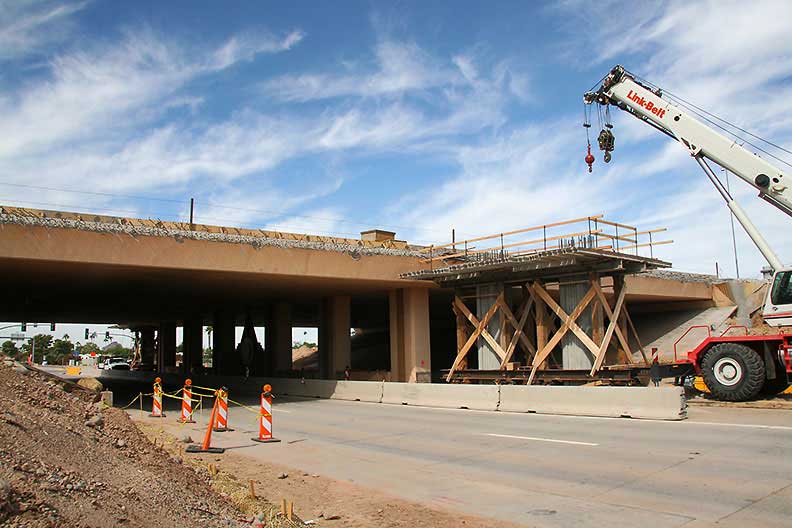Project timelines explained
Project timelines explained

The Loop 101 widening project started in August.
A couple of improvement projects happening right now on the Loop 101 and the Loop 202 are seemingly similar, but each has their own distinct timeline...
Work on the Loop 202 (Red Mountain Freeway) got started this month and the plans call for a majority of the project (Country Club Drive to Broadway Road) to be finished by summer 2015. The portion of the project that stretches from Loop 101 to Country Club Drive will wrap up in December 2015. Crews will come back the following spring to place rubberized asphalt.
Over on the Loop 101, a widening project that kicked off in August is scheduled for completion by late 2016.
How can that be, you might ask? (Actually, one of our readers did ask, which is what spurred the idea for this post. We get some really great questions here on the ADOT Blog!)
While the projects might sound comparable – they both include lane additions, signage, lighting, etc – they actually have many differences.
One of the major differences has to do with the project delivery methods being used.
The Loop 101 effort is a “Design-Bid-Build” project, which means that ADOT (or a consulting engineer working for the department) designs the project, solicits bids and then awards a contract to the lowest responsive and responsible bidder to build the project.
The Loop 202 work is a being completed as a “Design-Build” project. We’ve blogged about this method before, but in case you don’t have time to read that post right now, just know that the Design-Build concept involves pairing a design team with a construction team to create one, synergistic entity that delivers a freeway project from beginning to end. While there are advantages to using the Design-Build method (it’s faster), it’s not a great fit for all projects.
Delivery methods aren’t the only differences between the projects on the Loops 101 and 202. Project restrictions also factor into the two timelines.
The Loop 101 is located in a busy corridor in the Phoenix area. In addition to the daily traffic (173,000 cars per day!), the Loop 101 is also the only connection to Scottsdale from the east side of the Valley. That means the Loop 101 project has many restrictions on when the roads can and cannot be closed. The project has 27 restrictions that spell out when the contractor cannot have any closures (some examples include the days leading up to the Super Bowl and Spring Training).
Loop 202 is also used by many motorists, but not as many as the segment being improved on Loop 101. There are also fewer big events in the area. These two conditions allow crews to work on this project more days out of the year.
One more difference between the two projects has to do with how each is being widened.
The Loop 101 project is being widened to the outside, meaning that lanes are being added to the outside edge of the freeway. This is a more time-consuming process than adding lanes to the inside.
It takes longer because the work is impacting the ramps that are used to get people on and off the roadway. Because of this, the project has restrictions on how it can be built so traffic can have access to Loop 101 at all times.
“Anytime we close the cross road to build the bridge, the ramps and the ramps on adjacent streets are utilized as a detours. This means that when we are building a bridge we cannot have any closures on the adjacent roads or ramps,” says Loop 101 Project Manager Dan Haskins. “To build the project we have had to analyze what closures we want to take and make sure that no work is taking place that will cause any restrictions to the cross street or to access the Loop 101.”

